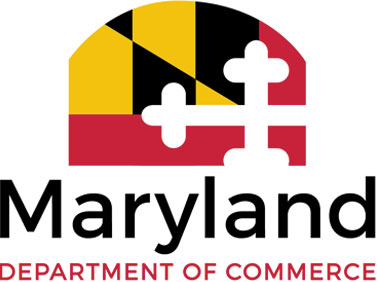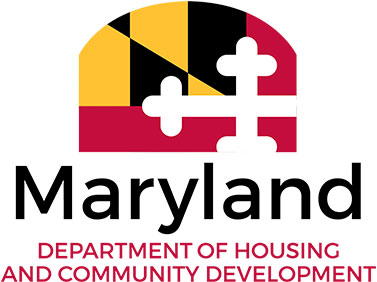News Release: Governor Hogan Announces Nearly $72 Million For State Revitalization Program Awards
Will Support 224 Projects and Activities Across the State, Including Ongoing Redevelopment of Lexington Market, Maryland Technology Center in Indian Head, Reconstruction of Harriet Tubman’s Father’s Cabin in Cambridge, Affordable Homes in Downtown Frederick
ANNAPOLIS, MD. (October 21, 2022) — Governor Larry Hogan today announced new awardees for six state revitalization programs administered by the Maryland Department of Housing and Community Development (DHCD). Nearly $72 million was awarded to 224 projects and activities that promote community development and economic growth. Counties and jurisdictions across the state received awards through one or more of the six programs.
“The partnerships that drive these projects across our state are crucial to spurring economic growth in Maryland’s diverse and vibrant communities,” said Governor Hogan. “Our state revitalization programs are a shining example of how we can work together to create impactful change and improve the quality of life for residents.”
The six programs will support revitalization and redevelopment projects and activities including: business expansion and retention; streetscape improvements; homeownership and home rehabilitation incentives; commercial improvement programs; community facilities; mixed-use development, and demolition activities. For a full list of awards, visit: FY23 State Revitalization Program Awards.
Strategic Demolition Fund. The Strategic Demolition Fund, a statewide program aimed at catalyzing activities that accelerate economic development and job production in existing Maryland communities, awarded $7.5 million to 22 projects, including:
Reconstruction of the cabin of Harriet Tubman’s Father, Ben Ross, to support the economic, cultural, and historic trades workforce development in Cambridge (Dorchester County)
Stabilization and exterior rehabilitation of the 1913 Union Railway Station building on Railroad Avenue, to allow for future development, culminating ultimately in the creation of a hub along the Salisbury Rail Trail (Wicomico County)
Ongoing rehabilitation of a vacant property in Indian Head (Charles County) to continue the Maryland Technology Center
Project C.O.R.E. Governor Hogan’s signature Project C.O.R.E., or Creating Opportunities for Renewal and Enterprise is an initiative to eliminate blight in Baltimore City and make way for green space, affordable and mixed use housing, and new opportunities for businesses. The initiative has removed or stabilized more than 5,200 vacant units in Baltimore. Project C.O.R.E. awarded $21.25 million to 26 projects, including:
Creation of a mixed-use project at the former auto service center in Remington to become a hub for service and connected urban living and anchored by Wide Angle Youth Media
Revitalization of the historic Mayfair Theater, including retention and stabilization of façade, as well as building new units, a parking garage and retail space
Improvement to infrastructure related to the Perkins Somerset Oldtown transformation plan
Baltimore Regional Neighborhood Initiative. The Baltimore Regional Neighborhood Initiative (BRNI) is designed to support redevelopment in communities within the Baltimore Beltway. More than $14 million was awarded to 66 projects, including:
Ongoing redevelopment of the historic Lexington Market
Stabilization of a 6,000-square-foot building in Upton’s Marble Hill that was featured in the 1953 Green Book as a food hall and coworking space
Numerous awards to community organizations for neighborhood clean-up and façade improvement activities
National Capital Strategic Economic Development Fund. Similar to BRNI, the National Capital Strategic Economic Development Fund (NED) provided $11.2 million in funding for 29 projects in communities in and around the Capital Beltway, including:
Rehabilitation of the Town of Brentwood’s fire station into the new town center
Demolition and pre-development for a new mixed-use, mixed-income, transit-oriented, intergenerational community in Silver Spring that will include affordable housing units
Demolition and infrastructure improvements for the redevelopment of the former hospital site in Landover to create a mixed-use community that includes quality commercial, retail and residential buildings
Community Legacy. Community Legacy awarded $8 million to 64 projects in designated Sustainable Communities throughout Maryland. Some of these projects include:
Rehabilitation of the historic State Theater in Havre de Grace (Harford County), including the installation of a comprehensive fire suppression system to reduce fire risk and provide benefits for the arts and entertainment focus of the city
Continuation of the renovation and construction of 12 affordable, for-sale condos in historic downtown Frederick to be sold to Habitat for Humanity-qualified, first-time homebuyers
Rehabilitation of a building in Cascade (Washington County) on the former Fort Ritchie property to preserve a historic Japanese Nisei mural and to turn the dilapidated historic structure into an artisan village
Seed Community Development Anchor Institution Fund. Another $10 million in grants and loans were provided to higher education institutions and hospitals by the Seed Community Development Anchor Institution Fund (SEED) for community development projects in disinvested areas of the state. The funds supported 17 projects, including:
Rebuild the Mens and Families Workforce Community Center into a community hub for employment, health, and violence reduction services to the East Baltimore community in partnership with Johns Hopkins University
Design and construction of a public pedestrian/bike pathway linking Gwynns Falls Trail at MedStar Harbor Hospital to Nursery Road Light Rail Station
Rehabilitation of the Old Ellicott City Jail (Howard County) as a Center for Climate, Heritage and Preservation Studies in partnership with the University of Maryland
“Over the last seven years, we’ve expanded our state revitalization programs, including the addition of Project C.O.R.E, allowing even more opportunity for investment across the state,” said DHCD Secretary Kenneth C. Holt. “Working with our partners to bring these projects to life also stimulates other public, private and nonprofit investment to revitalize communities, and spurs other programs that go hand in hand with revitalization efforts.”
For more information about DHCD and its revitalization programs, visit its website.
# # #
CONTACT:
Brandi Bottalico, Director, Office of Public Information – brandi.bottalico@maryland.gov


